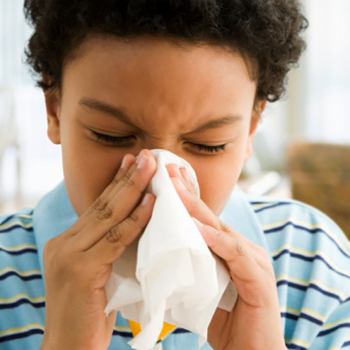When You Have a Respiratory Infection

Learn about the simple steps you can take to reduce your risk of respiratory illness.
Respiratory infections are illnesses that affect your lungs and nose - causing inflammation, congestion, and other symptoms. They are typically caused by viruses and bacteria that are spread by droplets in the air or person-to-person contact, like handshakes.
These illnesses are most common in the colder months when we’re indoors and gathering together. But we can all take some simple steps to reduce our risk of respiratory illness.
What are the symptoms of respiratory infections?
Respiratory infections most often cause things like coughing, sore throat, runny nose and fever. Some common respiratory illnesses are:
-
Cold
-
Flu
-
RSV
-
Pneumonia
-
Bronchitis
-
COVID-19
How can you protect yourself?
The good news is that we have vaccines for some common respiratory illnesses. For example, getting a Flu, RSV and COVID vaccine can protect you from getting sick or reduce your risk of developing serious illness.
Here are more simple ways to protect yourself and others:
-
Wash your hands often with soap and warm water or use hand sanitizer
-
Clean surfaces often
-
Avoiding sharing personal items with others, especially if you know they are/were sick
-
Wear a mask in crowded areas
-
Be conscientious. If you aren’t feeling well - stay away from others.
How should you treat respiratory infections?
Most mild respiratory infections can be treated at home. You may feel sick for a few days, but symptoms should start to improve within a few days. Treat mild cases with:
-
Rest
-
Drink a lot of liquids
-
Breathe in steam to reduce congestion
-
Gargle with salt water to help with sore throat
-
Use over-the-counter products to reduce symptoms
When should you seek medical attention?
Contact your primary care provider if you are high risk (immunosuppressed, have asthma, etc.) or if you have any of the following symptoms:
-
Fever over 102 degrees for more than three days
-
No signs of improvement after 10 days
-
Difficulty breathing, shortness of breath or wheezing
-
Mild pain or pressure in your chest
-
A sore throat for more than a week
Go to the nearest emergency room for any life-threatening symptoms.
Click here for more information on respiratory infections and vaccinations.